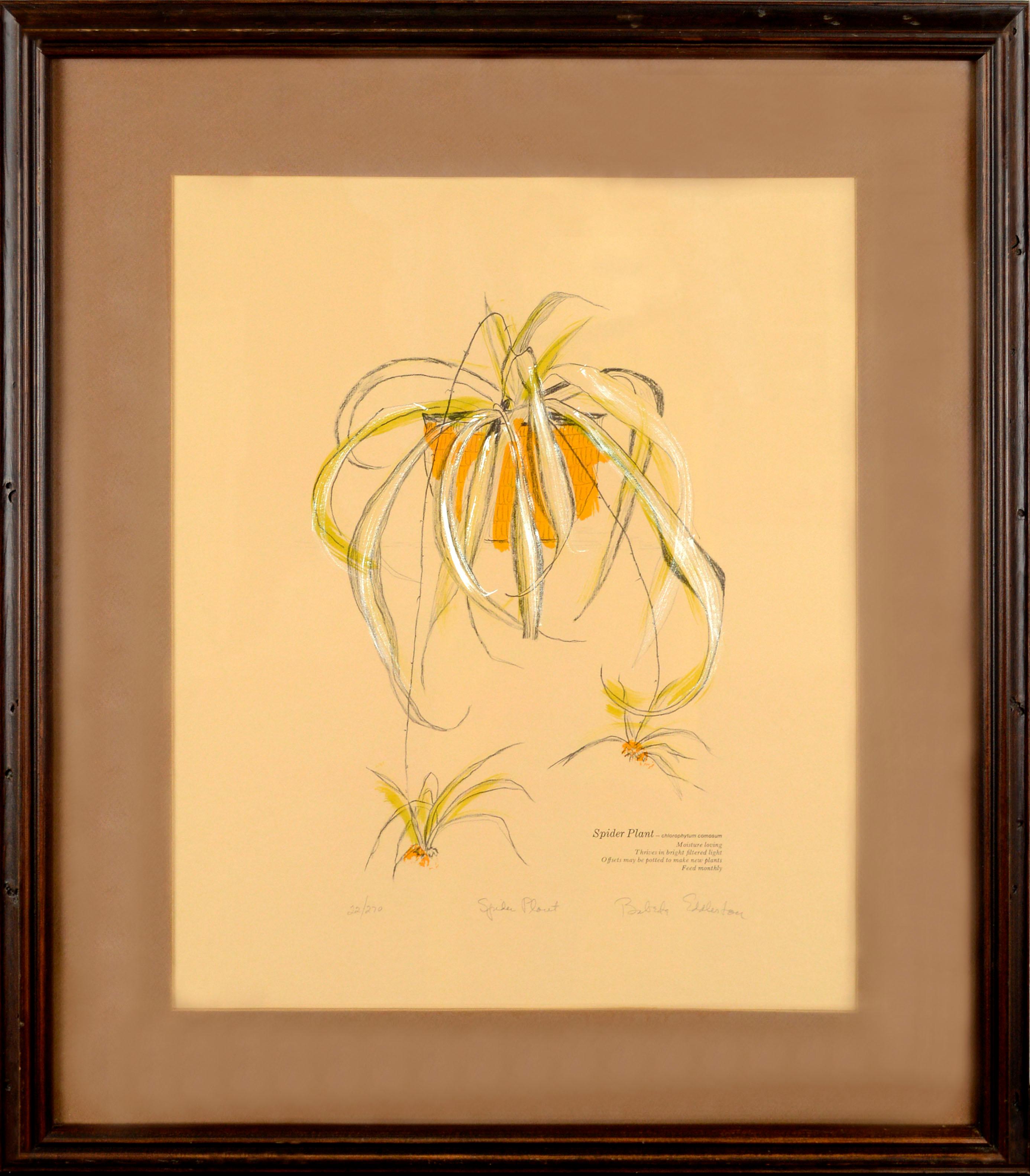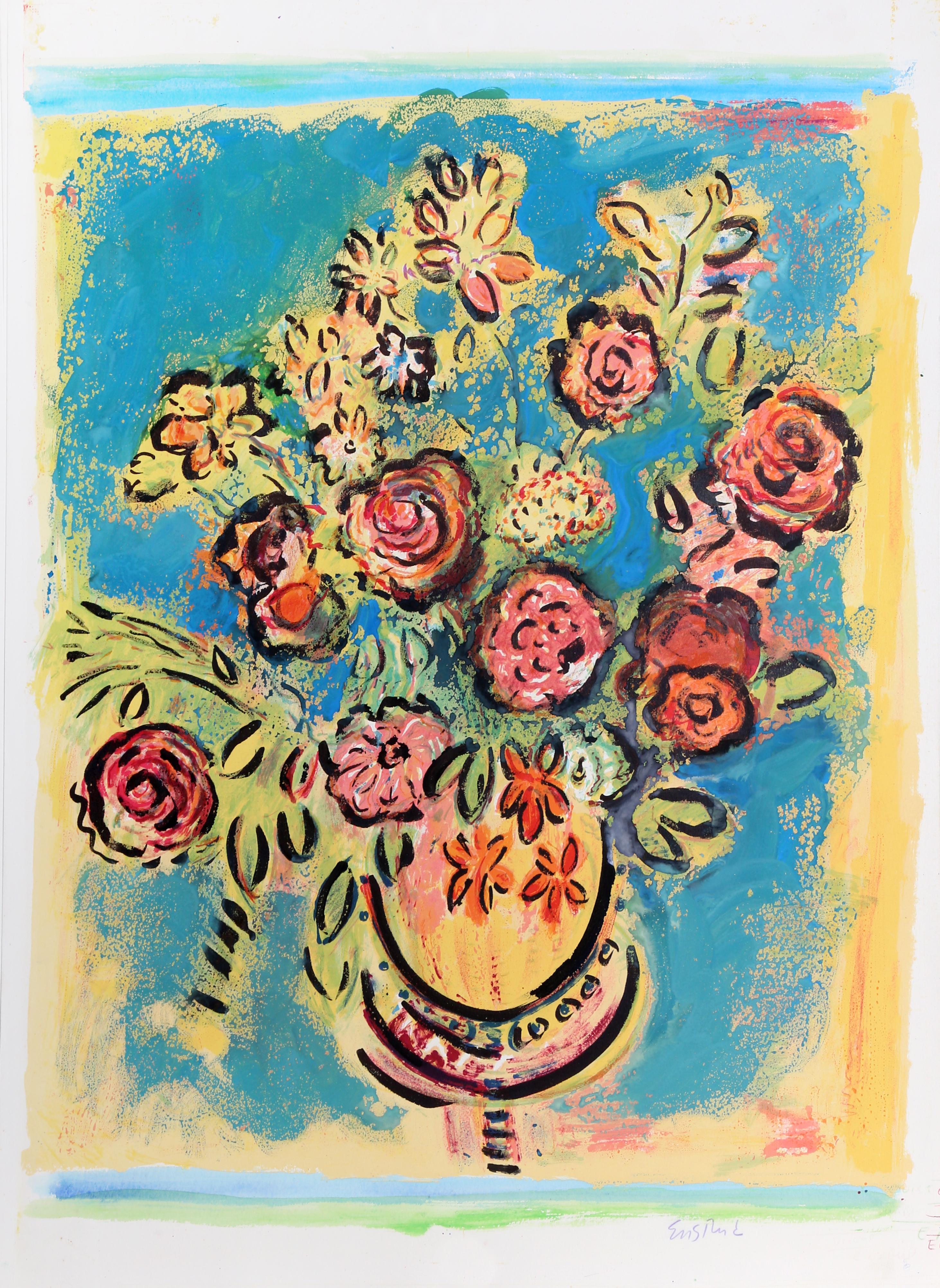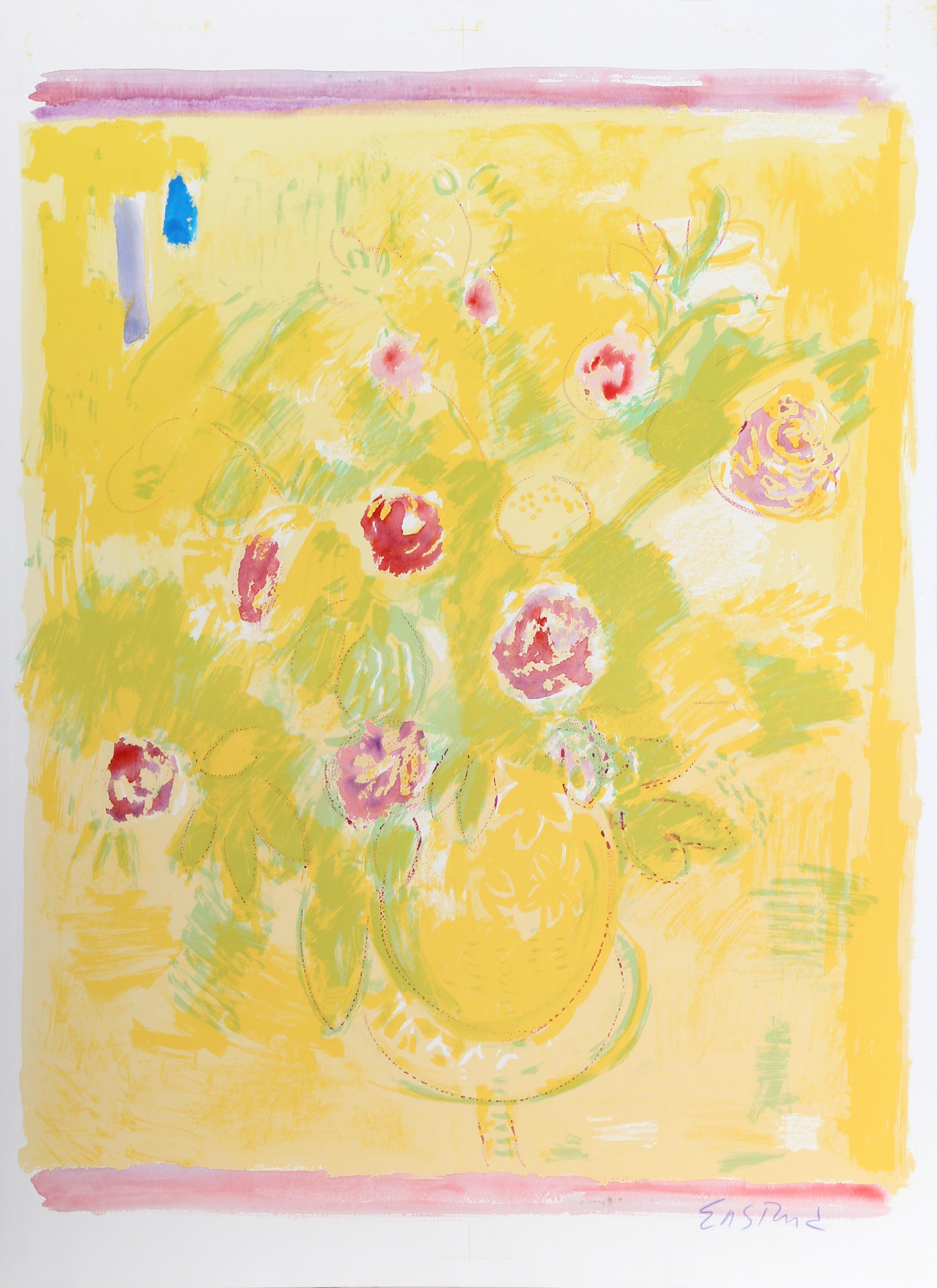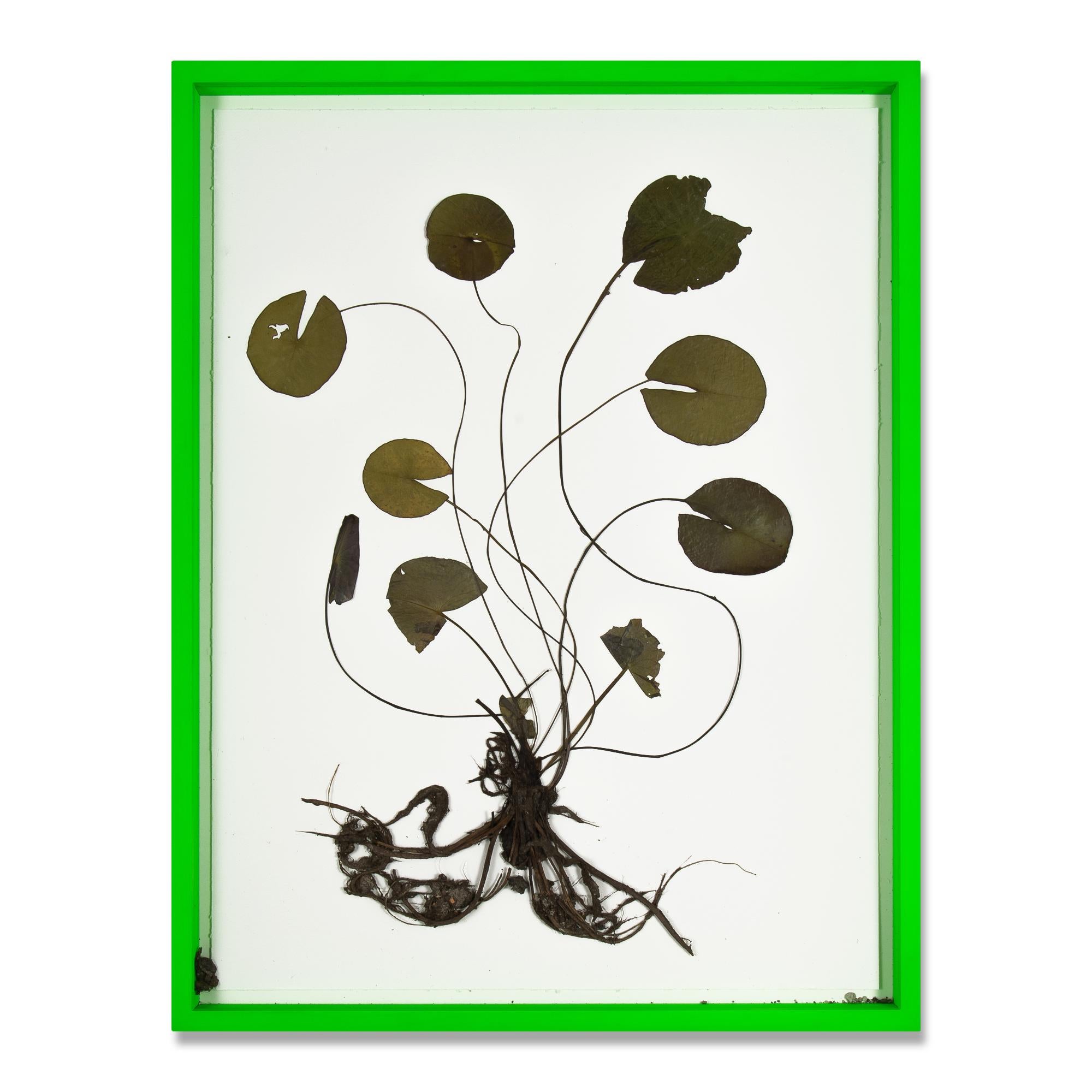Items Similar to Group of Eight Exotic Fruit.
Want more images or videos?
Request additional images or videos from the seller
1 of 9
UnknownGroup of Eight Exotic Fruit.1880
1880
About the Item
[CHINESE SCHOOL].
Group of Eight Exotic Fruit.
19th century, c.1880.
Group of eight watercolour and gouache pith papers of Exotic Fruits, edged in turquoise silk ribbon and laid on paper. Framed and glazed, overall size: 32.2cm by 24.1cm.
Pith seems not to have been adopted for painting until about 1820. Some European museums claim that their paintings on pith (often erroneously called ‘rice paper’ or ‘mulberry pith’) come from the end of the eighteenth century but there do not seem to be any dateable examples that are so early. There is a record of the Kaiser Franz of Austria buying some albums from an English Consul-General Watts in 1826. We know of an Italian Count who visited Canton in 1828 and had over 350 paintings on pith in his baggage when he died in Ambon two years later. In the British Library there is a scrap-book containing six pith paintings and a journal entry by a serving British officer who sent them home from India in 1829. These examples and contemporary accounts by visitors to Canton suggest that there was a flourishing trade in pith paintings by the early 1830s.
Pith presumably came into use for painting to satisfy the increasing demand for small, inexpensive and easily transported souvenirs, following the massive growth in the China Trade in the first quarter of the nineteenth century. Paintings in oils, on board and canvas were costly and difficult to carry home. Earlier and more prestigious export water-colours had often been on a larger scale and painted on fine Chinese paper or on paper imported from Europe. The albums of pith paintings (and later the little glass-fronted boxes) were inexpensive, light, easy to pack and gave the pictures some protection on the long voyage home. Because many were sold in albums and hence protected from the light, they retain their bright colours to this day.
Pith comes from the central column of spongy cellular tissue in the stem of a small tree called Tetrapanax Papyrifera, native to south-west China. It has had a variety of uses, some going back many centuries. At the imperial court both men and women wore coloured flowers made from pith in their hair. For use in painting, it is cut by hand with a knife into thin sheets from short lengths of the spongy tissue. Cutting is highly skilled and the constraints of the process mean that the finished sheets for painting seldom, if ever, measure more than about 30 by 20 cm. The sheets are dried, trimmed and used for painting without any further processing.
Because of the nature of pith and its cellular structure, the gouache used by the Chinese sat on the surface and produced a bright and even sparkling effect. Very fine detail could be achieved but pith did not lend itself to the flat wash of colour favoured for European watercolours.
Carl Crossman in his book The Decorative Arts of the China Trade (originally published under the title The China Trade) gives an excellent list of export painters with a note of those known to have painted on pith. These include Tingqua, Sunqua and Youqua. From 1757 until 1842 Canton was the only Chinese port open to trade with the west and it is no surprise that of the eight studios identified by Crossman as producing works on pith, six were in Canton.
It seems that the 1830s and 1840s may have been the heyday of pith painting. The international trading bases, the waterfront 'factories' on the 'Hongs' in Canton, where they were produced, were partially burnt during the First Opium War (1839-41) and totally destroyed in a fire of 1856. The foreign trading companies then moved to Honan and subsequently put up splendid new offices on reclaimed land at Shamian Island, a little up river. As the result of the Treaty of Nanking, in 1842 additional Chinese ports were opened up for foreign trade and Hong Kong was established as a major trading centre.
By 1860 references to China in the Illustrated London News, plentiful three years earlier, were few and far between. That is not to say that painting on pith ceased. Nicholas the second was given paintings on pith when he visited Canton in 1891 and the last Emperor is said to have sent him a gift which included pith paintings in 1907 (though these could have been examples of much earlier work).
Painters on pith did not in general sign their work (the sole exception is Sunqua whose name can be found on the face of three paintings on pith).
There are collections of paintings on pith in the Ashmolean, the British Museum, the Fitzwilliam, the Hermitage, the Peabody/Essex Museum in Massachusetts and the Hong Kong Museum of Art. However, because paintings on pith are not in general regarded as fine art, they are usually to be found in ethnographic or specialised collections.
- Creation Year:1880
- Dimensions:Height: 9.25 in (23.5 cm)Width: 12.75 in (32.39 cm)Depth: 0.75 in (1.91 cm)
- More Editions & Sizes:9.25 x 12.75Price: $10,826
- Medium:
- Movement & Style:
- Period:
- Condition:Some small nicks to the pith paper and the occasional spotting, otherwise good.
- Gallery Location:London, GB
- Reference Number:
About the Seller
5.0
Vetted Seller
These experienced sellers undergo a comprehensive evaluation by our team of in-house experts.
Established in 1979
1stDibs seller since 2020
11 sales on 1stDibs
Typical response time: 1 hour
- ShippingRetrieving quote...Ships From: London , United Kingdom
- Return PolicyA return for this item may be initiated within 14 days of delivery.
More From This SellerView All
- Iris Kaempferi: No.36 YEDO-JIMANLocated in London, GBIris Kaempferi: No. 36 YEDO-JIMAN Tokyo, Yoshinoen-Garden, circa 1910. Hand-coloured woodblock print on handmade rice paper, numbered and captioned at top, outlined in ink. Framed ...Category
1910s Naturalistic Still-life Prints
MaterialsWood, Watercolor, Rice Paper
- Iris Kaempferi: No.10 AKASHI-NO-UELocated in London, GBIris Kaempferi: No. 10 AKASHI-NO-UE Tokyo, Yoshinoen-Garden, circa 1910. Hand-coloured woodblock print on handmade rice paper, numbered and captioned at top, outlined in ink. Fram...Category
1910s Naturalistic Still-life Prints
MaterialsRice Paper, Wood, Watercolor
- Iris Kaempferi: No. 91 CHO-HIYENLocated in London, GBIris Kaempferi: No. 91 CHO-HIYEN Tokyo, Yoshinoen-Garden, circa 1910. Hand-coloured woodblock print on handmade rice paper, numbered and captioned at top, outlined in ink. Framed in...Category
1910s Naturalistic Still-life Prints
MaterialsWatercolor, Rice Paper
- Iris Kaempferi: No. 58 SHU-FU-RAKULocated in London, GBIris Kaempferi: No. 58 SHU-FU-RAKU Tokyo, Yoshinoen-Garden, circa 1910. Hand-coloured woodblock print on handmade rice paper, numbered and captioned at top, outlined in ink. Framed...Category
1910s Naturalistic Still-life Prints
MaterialsWood, Watercolor, Rice Paper
- Pineapple with foliage.By Maria Sibylla MerianLocated in London, GB[MERIAN, Maria Sibyl]. Pineapple with foliage. The Hague, Gosse, 1719. Engraving of a Pineapple with foliage by J. Mulder, P. Sluyter and D. Stoopendaal after Merian, with later hand-colour, from Dissertatio de Generatione et Metamorphasibus Insectorum Surinamensium. Framed and glazed, overall dimensions: 40cm by 53.2cm by 4.5cm. Superb engravings which depict the metamorphoses of South American insects and the exotic plants on which they feed. Maria Sybilla, daughter of the German engraver and publisher Matthias Merian, devoted herself to the study of European insects and their metamorphoses. As a result of the wealth of tropical varieties being brought back by the Dutch West Indies Company...Category
1710s Naturalistic Still-life Prints
MaterialsHandmade Paper, Watercolor, Engraving
- POITEAU/TURPIN. Traité des arbres fruitiers: A Set of Four ApplesBy POITEAU, A. and P. TURPIN.Located in London, GBPOITEAU, A. and P. TURPIN. Traité des arbres fruitiers: A Set of Four Apples H. Perronneau for T. Delachausée, Paris, 1807-1835. A set of Four Apples, fine stipple-engrave...Category
Early 1800s Naturalistic Still-life Prints
MaterialsHandmade Paper, Engraving, Watercolor
You May Also Like
- "Spider Plant", Hand Augmented 1970s Botanical Screenprint, 22/270By Babette EddlestonLocated in Soquel, CAWhimsical 1970's hand painted botanical silkscreen of a spider plant by Babette Joslyn Bauman Eddleston (American, 1922-1990). This limited edition screen print has splashes of color painted in by hand. The edition number 22/270 is written lower left. It is titled "Spider Plant" and signed "Babette Eddleston...Category
1970s American Impressionist Still-life Prints
MaterialsPaper, Watercolor, Ink
- "Baby's Tears", Hand Augmented 1970s Botanical Screenprint, 96/270By Babette EddlestonLocated in Soquel, CAWhimsical 1970's hand painted botanical silkscreen of baby's tears plant by Babette Joslyn Bauman Eddleston (American, 1922-1990). This limited edition screen print has splashes of color painted in by hand. The edition number 96/270 is written lower left. It is titled "Baby's Tears" and signed "Babette Eddleston...Category
1970s American Impressionist Still-life Prints
MaterialsInk, Paper, Watercolor
- "Leaves & Berries" giclée print after ca. 1950s original watercolor and collageBy Sylvia SpicuzzaLocated in Milwaukee, WI14.75 x 17.75 inches, artwork 22.88 x 25.75 inches, frame Born in 1908, Sylvia Spicuzza was the daughter of noted painter Francesco Spicuzza. Sylvia devoted herself to teaching art ...Category
1950s Modern Still-life Prints
MaterialsGiclée, Watercolor
- Quiet Sunday (Bouquet), Hand-painted Lithograph by Wayne EnsrudBy Wayne EnsrudLocated in Long Island City, NYA unique hand-painted lithograph of a colorful Bouquet of Flowers by Wayne Ensrud, American (1934). Quiet Sunday (Blue) Wayne Ensrud, American (1934) Date: 1980 Hand-Painted Lithogra...Category
1980s Contemporary Still-life Prints
MaterialsLithograph, Acrylic
- Quiet Sunday (Yellow), Hand-painted Lithograph by Wayne EnsrudBy Wayne EnsrudLocated in Long Island City, NYA unique hand-painted lithograph of a colorful Bouquet of Flowers by Wayne Ensrud, American (1934). Quiet Sunday (Yellow) Wayne Ensrud, American (1934) Date: 1980 Hand-Painted Lithog...Category
1980s Contemporary Still-life Prints
MaterialsLithograph, Acrylic
- Olafur Eliasson, Herbarium - Collage of Dried Water Lilies, Contemporary ArtBy Olafur EliassonLocated in Hamburg, DEOlafur Eliasson (Danish-Icelandic, b. 1967) Herbarium, 2021 Medium: Collage of dried and pressed Nympheas Ellisana water lilies (Latour-Marliac) on Lanaquarelle handmade paper, in fl...Category
21st Century and Contemporary Abstract Still-life Drawings and Watercolors
MaterialsFound Objects, Handmade Paper





